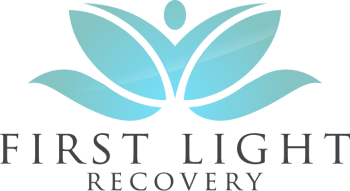What is World Bipolar Day?
World Bipolar Day (WBD) was formed in collaboration with the International Society for Bipolar Disorders (ISBD), the International Bipolar Foundation (IBPF), and the Asian Network of Bipolar Disorders (AND) as an initiative to raise awareness and promote education to bipolar disorders and to extinguish societal stigma. It is celebrated each year on March 30th, the birthday of famed artist Vincent Van Gogh, who was diagnosed with bipolar disorder.
This supportive, and internationally recognized day is important in bringing together communities to lend hope and resources. It stresses the timely diagnosis so to provide intervention in preventing further severity in symptoms. It helps in knowing individuals diagnosed with bipolar disorder are not alone and their lives can improve with the right education, treatment, and resources.
The black and white striped ribbon is worn on WBD. The stripes contrasting colors are chosen to represent the presence of the extreme sides of the disorder.
Bipolar Disorders
According to the American Psychiatric Association, there are four major categories of bipolar disorder including:
Bipolar I Disorder
Defined by manic episodes that last at least 7 days, or by manic symptoms that are so severe that the person needs immediate hospital care. Usually, depressive episodes occur as well, typically lasting at least 2 weeks. Episodes of depression with mixed features (having depressive symptoms and manic symptoms at the same time) are also possible.
Bipolar II Disorder
Defined by a pattern of depressive episodes and hypomanic episodes, but not the full-blown manic episodes that are typical of Bipolar I Disorder.
Cyclothymic Disorder
Defined by periods of hypomanic symptoms as well as periods of depressive symptoms lasting for at least 2 years (1 year in children and adolescents). However, the symptoms do not meet the diagnostic requirements for a hypomanic episode and a depressive episode.
Bipolar Disorder due to another medical or substance abuse disorder
The prominent and persistent mood disturbance is a direct physiologic consequence of substance abuse or medical condition.
There is no known definitive cause to bipolar disorders only that it is mostly the result of a combination of biological and environmental factors.
What are Bipolar Episodes
Bipolar episodes usually encompass cycles with displaying an initial stage of mania or hypomania. That looks like a period of abnormally elevated mood or emotions, high energy and activity level, and usually little need to sleep. This can cycle into depression with difficulties getting out of bed, hypersomnia, hopelessness, helplessness, and may encompass thoughts of harming self.
Triggers
There are many things that can trigger bipolar disorder or a bipolar episode of mania and/or depression or mixed episode. Alcohol and drug abuse can quickly spiral an individual into an episode. Stress is widely reported as a factor contributing to episodes. This can be stress in a relationship, work stress, and even as a result of a traumatic experience. Other contributing factors can be certain antidepressants and other medications as well as changes in the seasons, insufficient sleep, menstruation, pregnancy, or other hormonal conditions.
Coping
It is important to seek treatment and stick with it. Being patient with the process is not easy but it takes time. It is helpful to keep medical and therapy appointments and take all medications as directed. It is encouraged to write a wellness plan that supports structured activities, consistency, that includes sleep hygiene and exercise. Educate yourself on your symptoms. You may need to track them to better identify mood swings, triggers, and warning signs. It’s important to ask for help or support when needed and to avoid alcohol and drugs.
Treatment
- Medication
- Psychotherapy
- Education and self-management techniques
- Alternative Options
- Transcranial magnetic stimulation (TMS)
- Regular exercise
- Daily charting and journaling of daily activity, habits, and mood to provide to clinical providers to aid in supportive care recommendations
Raising Awareness for Bipolar Disorder
Supporting a friend is very important. With one in five people living with bipolar disorder, lending support can help in decreasing an individual’s risk to self-harming behaviors and increase the likelihood of a timely diagnosis.
Simply talking about it reduces the stigma and helps individuals with this diagnosis know they are not alone and gives hope they can improve daily living. Wear a ribbon to show your support on WBD.
To learn more about how you or a loved one can get treatment and help for their bipolar disorder contact us today.




